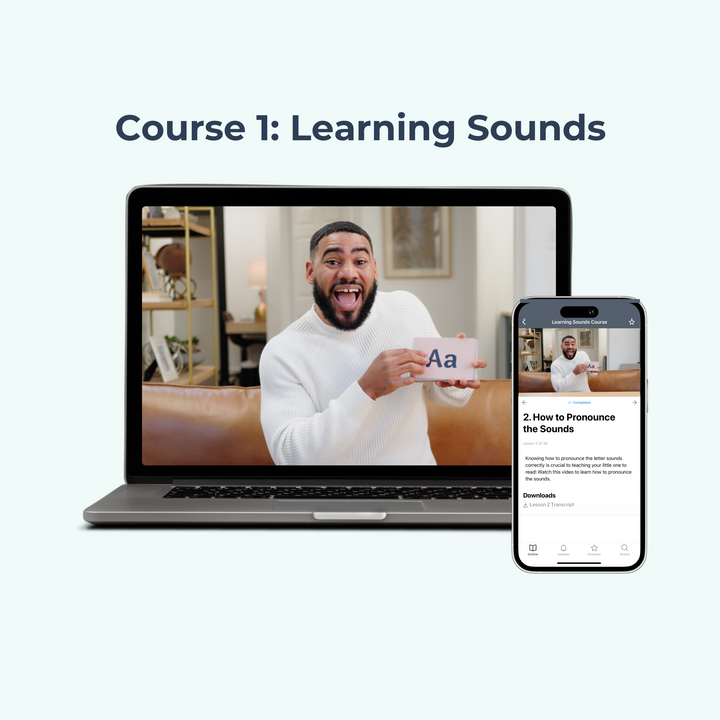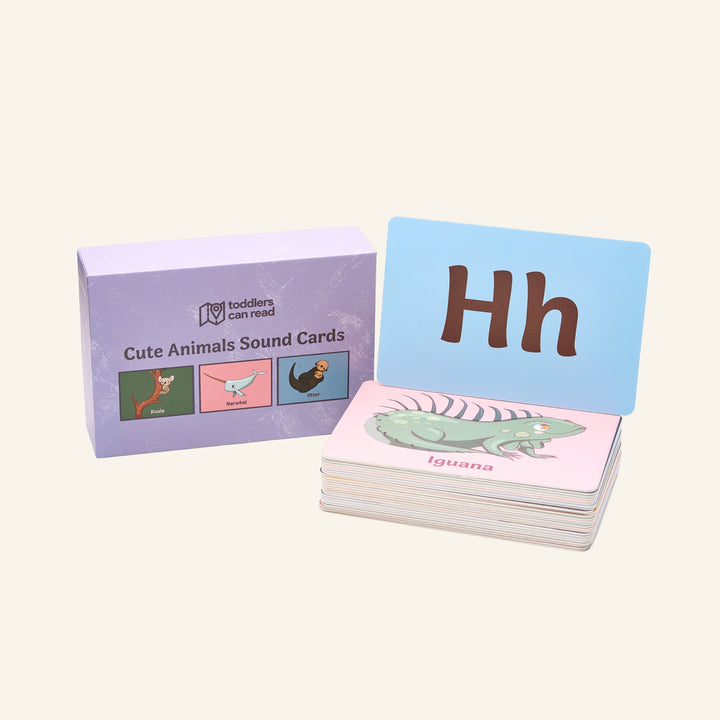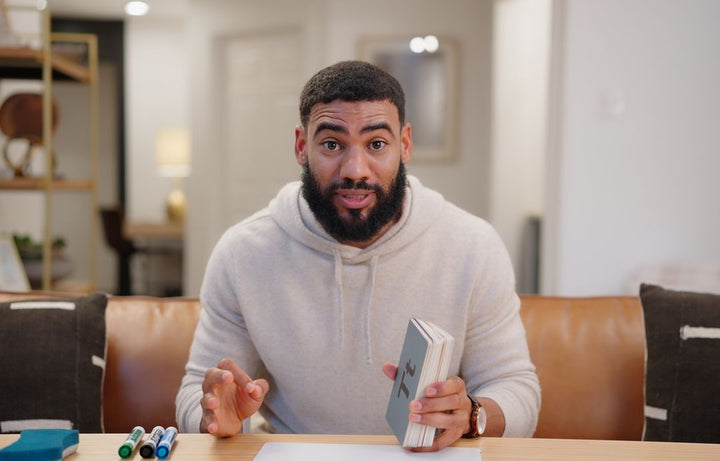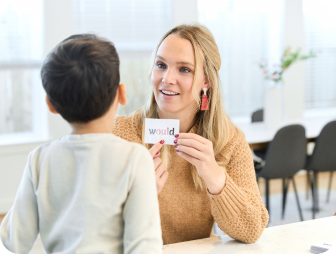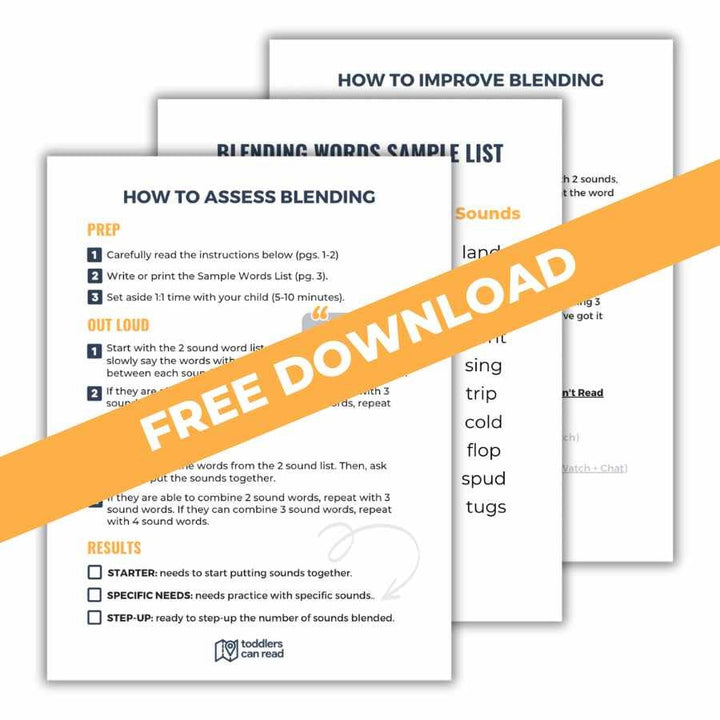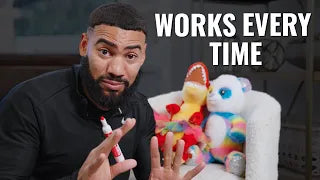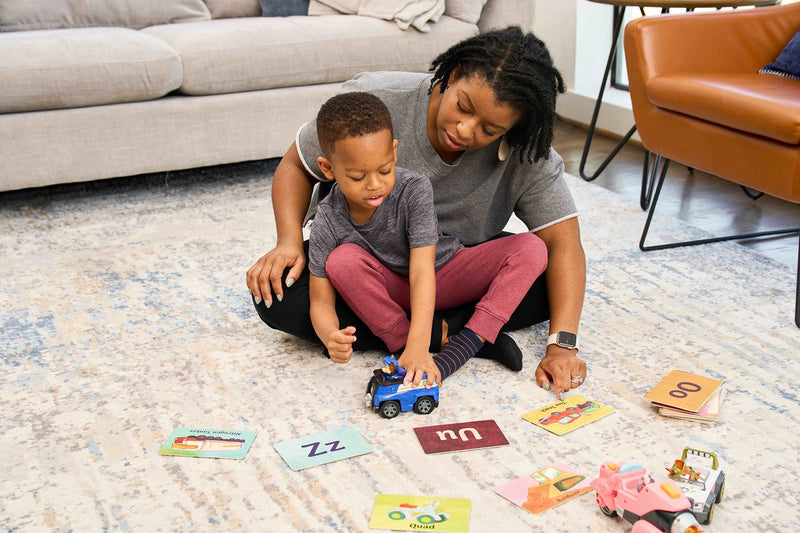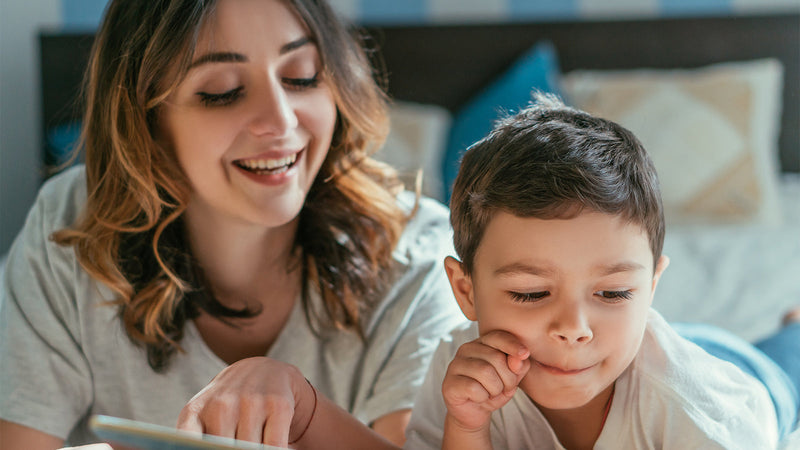In this post, you'll find out how to figure out what your little one knows, what they don't know yet, and what you can do to help them. Essentially: I'm giving you a cheat code to help your little one learn the letter sounds faster and more efficiently than any other approach you could try.
Why is assessing your child's letter sounds so important?
Here's the reality of the situation: Most of us assume our children know their letter sounds (or phonics sounds) because they can sing a song about them or they can recognize them next to a picture. I know that I was making this assumption when I started teaching kindergarten.
But just because a child has been shown a letter over and over (maybe they've done this with a song or with a "letter of the week" program) doesn't mean they actually know that sound.
And if we don't know which sounds they've learned and which sounds they haven't—it's going to be very hard to figure out the best way to support them.
So when you know exactly what your child CAN and CAN'T do yet, it puts YOU in the driver's seat to help improve your child's reading! And from the perspective of a former teacher and someone who has worked closely with families to support their children's reading: trust me, you need to be in the driver's seat. And you'll need this data whether you plan to teach your child to read yourself or whether you want to have productive conversations to support their teacher.
Step 1. Get your materials ready.

It takes very few materials to assess how many letter sounds your child knows. Don't overthink it!
All you'll need is a stack of sound cards (which you can make with a pen and paper or grab a set if you have them already. Just make sure there are no pictures or hints next to the letters that might help them!
Note: I recommend showing uppercase and lowercase letters at the same time because kids can learn both at once (without being confused when they get to reading.) Occasionally, they may only learn one case or the other. If this happens: just split THOSE specific letters onto two separate cards (one uppercase and one lowercase) and assess them again. This will help them learn all the uppercase and lowercase letters as quickly as possible!
Once you have the letter cards ready, simply shuffle them up in a random order. You always want to assess phonics sounds OUT of ABC order because we need to make sure they've truly learned the sounds, not simply memorized their order (this is more common than you might think!)
Materials:
- Neatly printed letter sound cards
- Shuffled cards (out of ABC order)
- Uppercase + lowercase letters together
- No pictures, hints, or clues
Step 2: Pick a time when they'll be focused.
While you DO want to make sure you have enough time set aside to work with your little one, what you DON'T want to do is over plan the assessment. This should take just a few minutes to get your sound cards ready and assess your little one.
I recommend finding a time when your little one is most focused to work with them. This may be in the morning after waking up or in the evening before bed. It might be during bath time when they're playing in the water or after a meal when they're content.
And they don't need to sit still at a desk or table. In fact, they don't need to be sitting OR still. They just need to be focused on the sound cards you're showing them.
Once your materials are ready, and you've picked a time to get started, you're ready to assess how many sounds your little one knows!
Step 3: Assess each of the sounds one by one.

If they say the sound quickly, that means they know that sound. If they hesitate or say the wrong sound, that means they don't quite know that sound yet.
And it's really that simple.
Assessment:
- Set aside a few minutes to assess.
- Gather and shuffle your sound cards.
- Show each sound card one by one.
- Ask: "What sound is this?"
Step 4: Keep track of how they did with the sounds.
As you assess your little one, it is important to keep track of which sounds they know and which sounds they don't know yet. To do this, simply place the cards they know in one pile and the cards they don't know in another pile.
This assessment will tell you immediately whether your child knows:
- NONE of the sounds, and it's time to decide whether you want to start teaching them.
- SOME of the sounds, and it's time to help them learn the rest of the sounds they missed.
- ALL of the sounds, and it's time to focus on blending the sounds into words instead.
Don't get discouraged if you thought your little one knew more of the sounds...
It is really common for parents, caregivers, and even teachers to think that our kids must know all of their sounds because of their age or their reading ability... when in reality they're still struggling to remember a few of the basic sounds. Or we might think that they should at least know some of the sounds because they've seen and heard them so often... when really they've simply memorized a song or watched YouTube videos.
Just remember: This is not an assessment of your parenting skills. Nor is it an assessment of your child's intelligence. This does not tell you whether you should feel positively or negatively about their reading. This is simply a tool we use to better understand where our kids are at now, and what we need to do to help them moving forward.
OK, that was easy... What comes next?
If you completed this assessment, I'm guessing you feel one of two ways:
- You feel excited. The assessment gave you a clearer picture of what your little one needs to work on, and you're excited to get started with them.
- You feel unsure. You just learned a lot of new information, and you're unsure what to do with it or how to help your little one advance in their reading.
You may feel a little bit of both. But regardless of how you feel, you're now in the driver's seat. So here's what I recommend doing next:
If they know NONE of the sounds...
If your child knows none of their sounds, don't sweat it. Children don't know what they haven't been taught. So, my biggest recommendation would be to watch my 30-minute free training where you can learn how to get started with teaching the letter sounds, including:
- How many sounds to teach them at a time
- How to keep track of their progress
- When to move on to the next stage of reading
There is also a live chat for support if you have any questions while you get started.

If they know SOME of the sounds...
If your child knows some of the phonics sounds, you're in a really good spot because you know that they can learn the rest of them. At this stage, you're going to keep track of the sounds they know and the sounds they don't know yet. That way, you'll know exactly which sounds they still need to learn next.
Again, I have some really valuable information in my free training. And I also have a full Learning Sounds Course which includes over 2 hours of course videos (from learning the basics, to getting started, to watching a full lesson video, to figuring out what to do if they're still not getting it.) This course also includes digital handouts including: printable sound cards, a suggested sound sequence, and a full lesson plan!
If they know ALL of the sounds...
If your child knows all of their letter sounds, then chances are they're already reading their first words or VERY close to it. At this stage, it will be critical that you develop their ability to BLEND sounds together into words. And I have two places you can look for support with blending words:
First, there is a section on blending in the free training. In the training, I'll show you how to start blending out loud and how many sounds to blend at a time.
There's also a full Blending Words Course which includes all of the more detailed information on how to blend that is not in the training. This includes an exact progression to practice blending, lists of words to practice at every level, a full lesson plan, and videos of me demonstrating all of it with my son. Like all of my courses, I work really hard to make it step by step and easy to follow so you can feel confident teaching your child how to read!
Conclusion
You don't have to rely on a phone call or a report card from your child's teacher to know where they're at. You don't have to play the guessing game with one of the most important literacy skills in your child's life to know how to help them. If you simply follow these 4 steps, you'll have everything you need to get started!
Good luck! And let me know how it goes!
